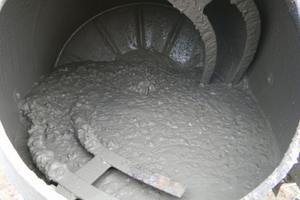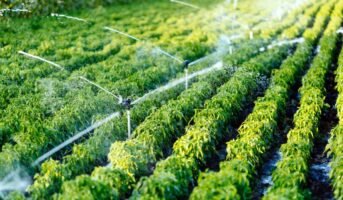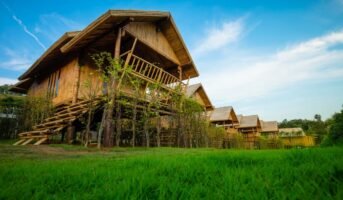The value of ground granulated blast furnace slag (GGBS full form) lies in its ability to replace traditional concrete materials in a more environmentally friendly manner. As GGBS is a waste product, appropriate disposal is required. So, using this waste instead of traditional concrete materials like cement, fine aggregate, and coarse aggregate can help the environment. Also, several experiments demonstrate that adding ground-granulated blast furnace slag to concrete does not reduce its strength.
It comes from the blast furnace, which is where iron is made. These furnaces burn coal, limestone, and iron ore at temperatures over 1500 degrees Celsius. The iron ore is converted to iron at such temperature, while all other components turn into slag and float on top of the iron. Periodically, this slag is tapped off as a molten liquid and quickly quenched with water.
This procedure creates granules that resemble coarse sand while optimising the cementitious characteristics. After drying, the granulated slag is crushed into a fine powder. Due to its similarities to cement clinker in terms of characteristics, it is sometimes known as slag cement.

Source: Pinterest
Ground granulated blast furnace slag: Benefits
The ultimate strength of concrete built using GGBS cement is greater than that of Portland cement. Compared to Portland cement-only concrete, it contains more calcium silicate hydrates (CSH), which increase concrete strength, and less free lime, which has no such effect. Over time, concrete built with GGBS keeps getting stronger. Its benefits are mentioned below.
- Increases the concrete structure’s tensile strength and longevity
- Improved workability reduces the danger of thermal cracking and facilitates placement and compaction.
- Lessening of shrinkage cracks
- Concrete permeability and voids are decreased.
- It offers a balanced mixture
- Stronger flexural capacity
- Possesses good compaction and permeability properties
- Increases resilience to sulphate attack
- High resistance to the entry of chloride
- Compared to traditional mixed hydration, the heat of hydration is lower.
- Alkali-silica reaction is strongly resisted.
- It enhances the appearance and provides a superior surface polish.
- Significant sustainability advantages
- Progressive hydration of GGBS results in a reduction in peak and overall heat production.
- It does not release any nitrogen oxides, carbon dioxide, or sulphur dioxide

Source: Pinterest
Ground granulated blast furnace slag: How to use GGBS in concrete?
Ground granulated blast furnace slag (GGBS) is a by-product of the steel industry and is used as a supplementary cementitious material in concrete. Here are the general steps to use GGBS in concrete:
- Determine the percentage of GGBS to be used: GGBS is usually used as a partial replacement for Portland cement in concrete. The percentage of GGBS used in concrete varies depending on the project’s requirements, but it is typically 20-50%.
- Calculate the mix design: The concrete mix design needs to be adjusted to accommodate the addition of GGBS. The water-cement ratio and the number of other materials, such as aggregates and admixtures, may need to be adjusted to maintain the desired workability and strength of the concrete.
- Add GGBS to the concrete mix: GGBS is added to the concrete mix as a powder. It should be added along with the other dry materials, such as cement and aggregates, and mixed thoroughly before the addition of water.
- Mix the concrete: The concrete should be mixed thoroughly to ensure the GGBS is evenly distributed.
- Cure the concrete: The curing process for GGBS concrete is similar to regular concrete. The concrete should be covered with a curing compound or kept moist for at least seven days after casting to ensure proper strength development.
It’s worth noting that GGBS may increase the setting time of the concrete, so it’s important to monitor the setting time and adjust the mix design as necessary to ensure that the concrete is workable and can be placed in the required time frame. Additionally, GGBS concrete may have a slightly lower early strength than Portland cement concrete. Still, it typically has higher long-term strength and improved durability due to its lower permeability and resistance to sulphate attack.
Ground granulated blast furnace slag: What are the applications of GGBS?
Ground granulated blast furnace slag (GGBS) is a supplementary cementitious material used in various applications in the construction industry. Some of the common applications of GGBS are:
- Concrete production: GGBS is commonly used as a partial replacement for Portland cement in concrete. It can improve concrete’s strength, durability, and workability and reduce the construction’s carbon footprint.
- Precast concrete products: GGBS can also produce precast concrete products, such as paving blocks, kerbs, and retaining wall blocks. The use of GGBS in these products can improve their strength, durability, and resistance to chemical attacks.
- Soil stabilisation: GGBS can stabilise soil in construction projects, such as road construction, embankments, and foundations. It can improve the soil’s strength and durability and reduce the need for costly excavation and replacing poor-quality soil.
- Mining and waste management: GGBS can also be used in mining and waste management applications, such as backfilling mine shafts, stabilising landfills, and remediating contaminated soils. Its ability to reduce permeability and resist chemical attack makes it a suitable material for these applications.
- Marine and coastal construction: GGBS can be used in marine and coastal construction applications, such as seawalls, jetties, and harbours. Its resistance to sulphate attack and seawater corrosion makes it a suitable material for these harsh environments.
Overall, GGBS is a versatile material that can be used in various applications in the construction industry. Its ability to improve construction materials’ strength, durability, and sustainability and reduce their carbon footprint makes it an attractive option for many construction projects.
FAQs
What is GGBS?
GGBS is a by-product of the iron and steel industry, obtained by quenching molten iron slag from a blast furnace with water or steam. It is a supplementary cementitious material commonly used to produce concrete and other construction materials.
What are the benefits of using GGBS?
GGBS has several benefits, including improving the strength, durability, and workability of concrete; reducing the carbon footprint of construction; and improving the chemical resistance and long-term performance of construction materials.
How is GGBS used in concrete production?
GGBS is a partial replacement for Portland cement in concrete. It is typically added to the concrete mix as a powder and mixed thoroughly with other materials before adding water. The percentage of GGBS used in concrete varies depending on the project's requirements, but it is typically 20-50%.
Housing News Desk is the news desk of leading online real estate portal, Housing.com. Housing News Desk focuses on a variety of topics such as real estate laws, taxes, current news, property trends, home loans, rentals, décor, green homes, home improvement, etc. The main objective of the news desk, is to cover the real estate sector from the perspective of providing information that is useful to the end-user.
Facebook: https://www.facebook.com/housing.com/
Twitter: https://twitter.com/Housing
Email: editor@housing.com












